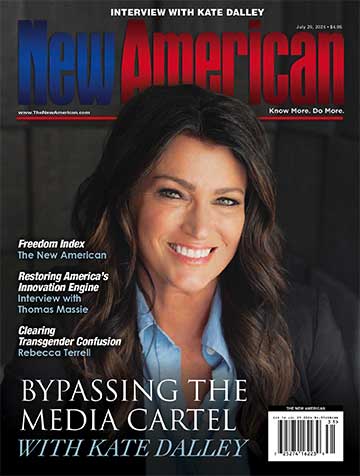
Citing “grave concerns about the damaging physical and mental health impacts of the prevailing COVID-19 policies,” hundreds of epidemiologists and public-health scientists are calling on governments the world over to allow their citizens to resume their normal lives while protecting those truly vulnerable to the coronavirus.
The Great Barrington Declaration, the result of a recent conference convened by the American Institute for Economic Research (AIER), was primarily authored by three epidemiologists: Martin Kulldorff of Harvard University, Sunetra Gupta of Oxford University, and Jay Bhattacharya of Stanford University. The document has thus far been cosigned by more than 800 other medical and public-health scientists and medical practitioners.
“Current lockdown policies are producing devastating effects on short and long-term public health,” reads the declaration. “The results (to name a few) include lower childhood vaccination rates, worsening cardiovascular disease outcomes, fewer cancer screenings and deteriorating mental health — leading to greater excess mortality in years to come, with the working class and younger members of society carrying the heaviest burden.”
All of this is a matter of public record. Because of lockdowns and the panic sown by officials and media figures, people have been dying from heart attacks at home rather than seeking treatment in hospitals. The Lancet, a British medical journal, estimated in July that lockdown-induced delays in cancer treatment in the United Kingdom would lead to significant additional deaths among cancer patients. And even Centers for Disease Control and Prevention (CDC) director Robert Redfield has admitted that the lockdowns have led to “far greater” deaths from suicide and drug overdose than would normally be expected — so many, in fact, that they dwarf the number of deaths attributed to COVID-19.
Thus, the epidemiologists conclude that “keeping these measures in place until a vaccine is available will cause irreparable damage, with the underprivileged disproportionately harmed.”
“Fortunately,” they continue, “our understanding of the virus is growing. We know that vulnerability to death from COVID-19 is more than a thousand-fold higher in the old and infirm than the young. Indeed, for children, COVID-19 is less dangerous than many other harms, including influenza.”
“As immunity builds in the population, the risk of infection to all — including the vulnerable — falls,” they explain. In other words, allowing the virus to spread among low-risk individuals until “herd immunity” is reached is the only way to put it behind us. “Our goal,” they write, “should therefore be to minimize mortality and social harm until we reach herd immunity.”
To minimize mortality, they recommend concentrating on protecting the vulnerable, particularly the elderly. They suggest, for instance, that nursing homes use only staff members with “acquired immunity” to the virus and frequently test others and that retired people have food and other essentials delivered to their homes and meet family members outside whenever possible.
Meanwhile, preventing social harm means permitting those with minimal risk to resume their pre-COVID lives “immediately,” say the doctors. “Schools and universities should be open for in-person teaching. Extracurricular activities, such as sports, should be resumed. Young low-risk adults should work normally, rather than from home. Restaurants and other businesses should open. Arts, music, sport and other cultural activities should resume. People who are more at risk may participate if they wish, while society as a whole enjoys the protection conferred upon the vulnerable by those who have built up herd immunity.”
Such an approach would both enable a faster resolution of the challenges posed by COVID-19 and put an end to the tyranny of trying to stop an unstoppable virus by shutting down the world. As AIER senior fellow Donald Boudreaux observed:
It’s infantile to mistake a problem unusually challenging for one so unprecedented that many of the foundational rules of society are to be abandoned indefinitely. Just because reality occasionally throws us curveballs with uncommonly large arcs does not mean that we, upon encountering such a curveball, should treat it as a pitch that differs categorically from ordinary ones. We should remain in the batter’s box, adjust as appropriate within the rules, and do our best to hit such a pitch as we would any other. We should not suspend the rules of the game in order to enable the oncoming ball to be blasted with bazookas.
Michael Tennant is a freelance writer and regular contributor to The New American.



